Tracing Borders and Shaping Futures: The Botswana Focus at RMB Latitudes
- by Timothy Gawaya
--------------
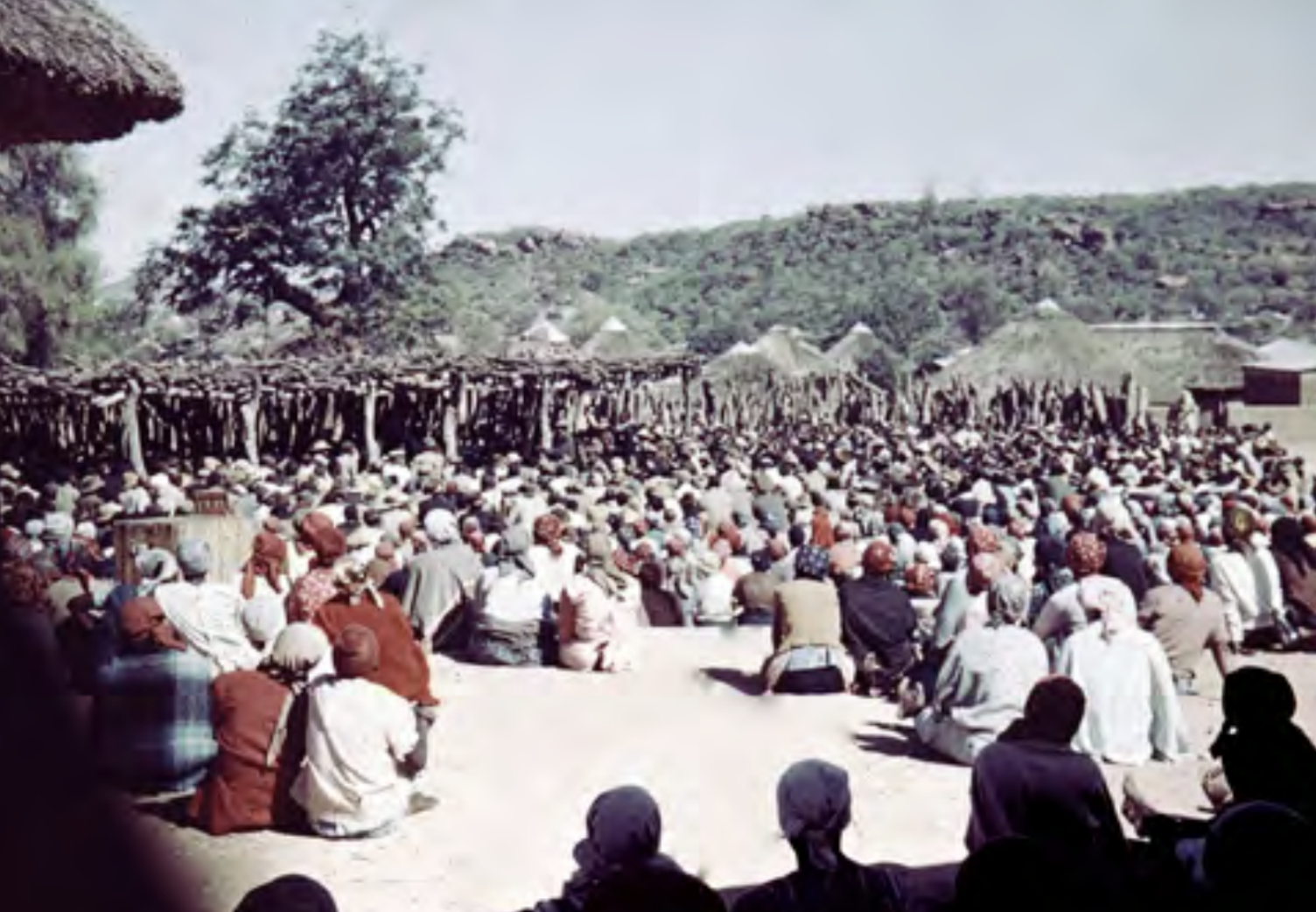 Mochudi 1966, A public meeting in the town’s central ‘square’, courtsey Sandy Grant's 'Botswana: Photographs of a Country in Transition Places and Their People 1965 - 2016'
Mochudi 1966, A public meeting in the town’s central ‘square’, courtsey Sandy Grant's 'Botswana: Photographs of a Country in Transition Places and Their People 1965 - 2016'
Art Fairs are a manifestation of the productive tension between a thing and its parts, aiming to present a global whole in a serial manner. For RMB Latitudes’ Botswana exposé, operating within an ethos of accessibility, collective engagement can be conceptualised and established through a singular focus on a locale. This year’s Botswana focus grapples with the historical and ideological narratives of borders, those internal to the region as well as the geographical markers distinguishing Botswana in relation to South Africa and the broader world. From this juncture, it is perhaps possible to conceive and conceptualise critical frameworks and projects rooted in the nuances of Botswana’s cultural and political landscape. Exhibiting at RMB Latitudes this year are The Space Botswana, ReCurate, Banana Club, TBP Artist Collective, and Art Residency Centre Botswana (ARC), curated by Latitudes Curator Boitumelo Makousu.
Latitudes’ focus on Botswana aims to showcase the country’s inexhaustible visual histories through a focus on contemporary artistic thought and practice. Yet this is by no means a melancholy attempt at recapitulating previous models and moments through contemporary mediation (neither should this be seen as a retrieval contending for purposive resolution which often only occurs through semblances and apparitions.) By contrast, the focus serves as an incubation space, a means of inserting Botswana’s art into the zeitgeist. This drive is reflected in a special online collaboration with Ora Loapi, a Gaborone-based curatorial and archival project founded by Lerato Motshwarakgole. As it were, a core notion informing Ora Loapi is uncovering Botswana’s complex and often obscured visual histories.
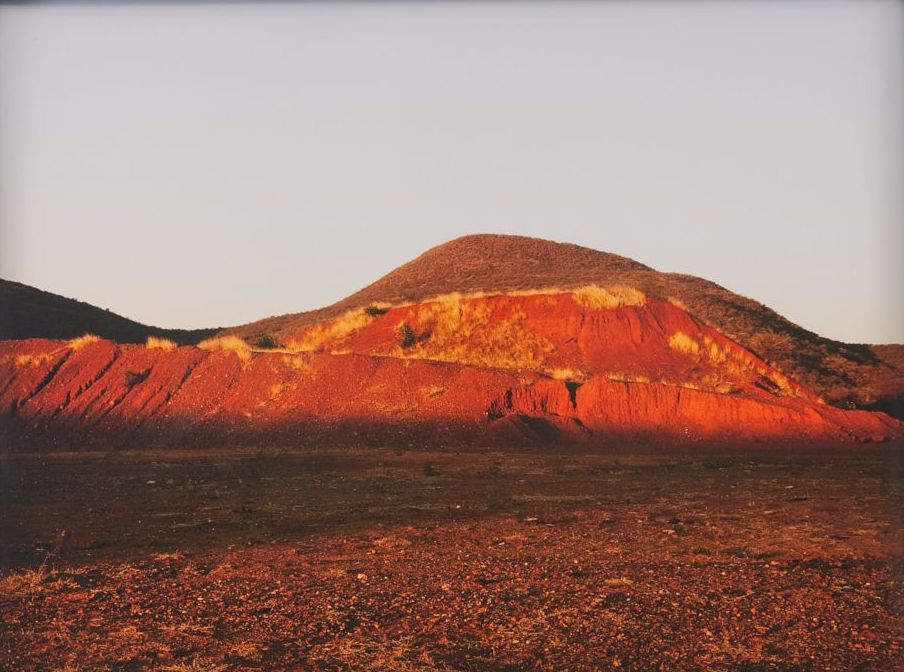 Thero Makepe, The Place that Dried Up, 2023, R31,250.00 ex. VAT, presented by Vela Projects, ENQUIRE
Thero Makepe, The Place that Dried Up, 2023, R31,250.00 ex. VAT, presented by Vela Projects, ENQUIRE
For Motshwarakgole’s work with Ora Loapi, visual archives serve a role exceeding the formation of any given identities. ‘How do we see ourselves better?’ she reflects, alluding to a project of greater complexity and value irreducible to the imposition of personalised images (such as prescriptive geographical, cultural or national boundaries.) Complexity, to a certain extent, can be understood along playful lines, interchangeable parts coming in and out of view. This invokes an image of fluidity and motion, but a motion that can’t be reduced to sequential evolution. And indeed, fluidity is a lens through which Motshwarakgole conceives the historical development of Botswana's artistic practice: from the anti-colonial cultural work of the Medu Art Ensemble in the latter half of the twentieth century to the multidisciplinary work of TBP Artist Collective in the present. Botswana’s art, broadly understood, or even the specificity of cultural work, is typified by intersecting lines and flows: a movement of ideas, techniques, and groups across social and geographic parameters.
Ensembles aren’t distinct from the individuals which constitute them, and the same goes for individuals which would remain empty referents if conceived in isolation from their constitutive elements. But the three orders of magnitude – ensemble, individual, and element – don’t stand in a sequential series where one can be set against the other. Ensembles aren’t opposed to elements, in the same way that a dollop of oil paint isn’t opposed to the form imposed on the canvas. Rather, ensemble, individual, and element stand in a relation of recursive causality, an open loop where the slightest modification changes the standing of ensemble in relation to individual, individual to element, and so on: an audience member coughs and Hamlet drops poor Yorick’s skull.
TBP Artist Collective, a Gaborone-based multidisciplinary contemporary artist collective, invokes an understanding of ensembles, individuals and elements for their booth at RMB Latitudes 2025. I spoke with the artist Thebe Phetogo, a member of TBP Artist Collective. “Our project [revolves] around the idea of Selemela,” Phetogo told me. “Selemela refers to the Pleiades star cluster, which in Setswana and other regional cultures signals the start of the ploughing season. [This] metaphor speaks to the role of TBP as a collective: we are both cultivating and archiving Botswana’s contemporary artistic voice, addressing gaps in representation within local and international art spaces.” As an ensemble, TBP’s Fair booth is a play between artists and the audience in a recursive loop, the latter conditioning the former, invoking an expansive concept of the work. This extends to the specificity of the mediums selected by the collective, ranging from painting and installation to new media.
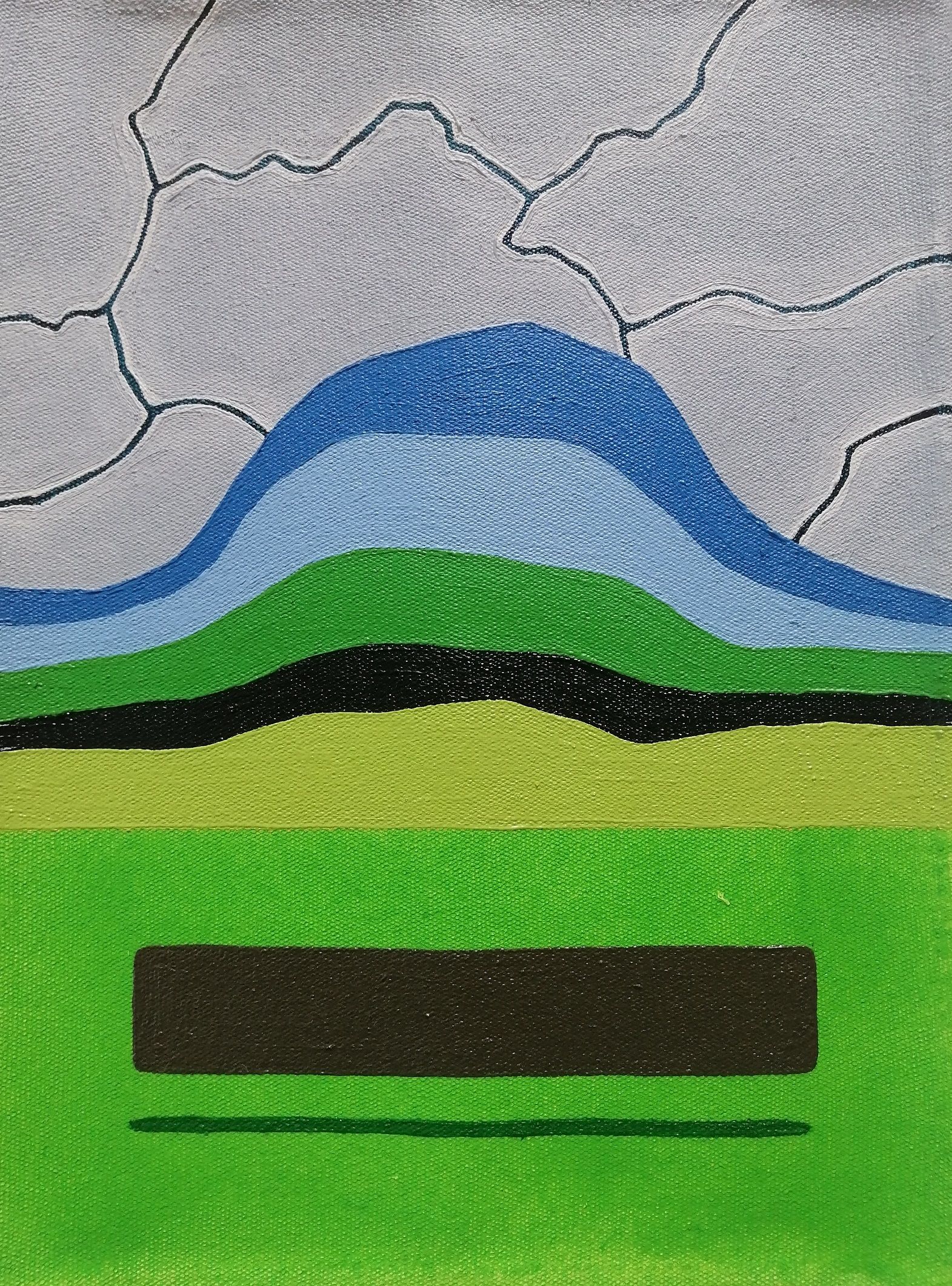
Thebe Phetogo, Lowe Day Painting (Grey Sky II), 2024, R9,800.00 ex. VAT, CONTACT TO BUY
A similar spread of mediums and forms is shared by The Art Residency Centre (ARC), another exhibiting space at RMB Latitudes. ARC is an artist-led initiative based in Gaborone which aims to offer a distributed platform for the dissemination of work by a new generation of Motswana artists. For their Fair booth, ARC are bringing together a diverse lineup of multidisciplinary artists. This selection of artists represents, for ARC’s co-founder Ann Gollifer, a space “[for] artworks that explore the confines of the traditional to find more relevant modes of expression.” ARC’s showcase is poised at a midpoint, a threshold marking the potential emergence of a complex visual and intellectual sensibility.
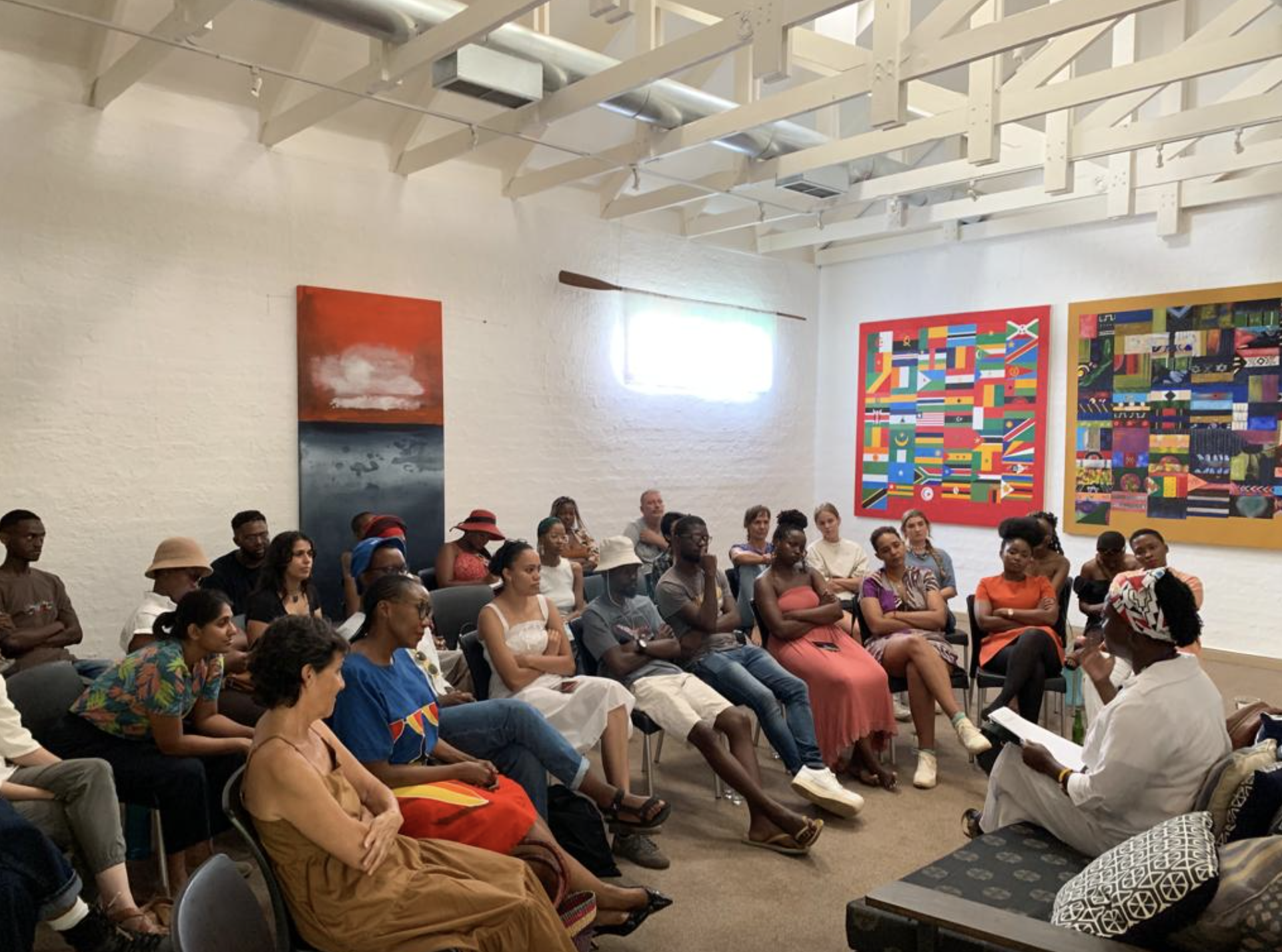 The Art Residency Centre (ARC)
The Art Residency Centre (ARC)
If Botswana’s contemporary art scene is teetering between the thrill of uncertainty and creative evolution, this is reflected in ReCurate’s Fair booth. ReCurate, a leading curatorial agency in the region, aims to present a conceptual focus on the notion of transition and liminality. Meditating on Botswana’s unique racial and socio-historical constructs, ReCurate’s liminal theme is as much about temporal suspension as it is a concern with the uncertainty underpinning contingent transnational, ideological and historical structures.
And yet, without diverging into the theological, purgatorial suspension is a state that is to be exceeded by necessity. For The Space Botswana, an artist hub and galley located in Maun, collaborative work and creative organisation are a means through which ambiguity and uncertainty can be overcome (as The Beatles (and the poet Dante centuries earlier) remind us, one only gets by with a little help from their friends.)
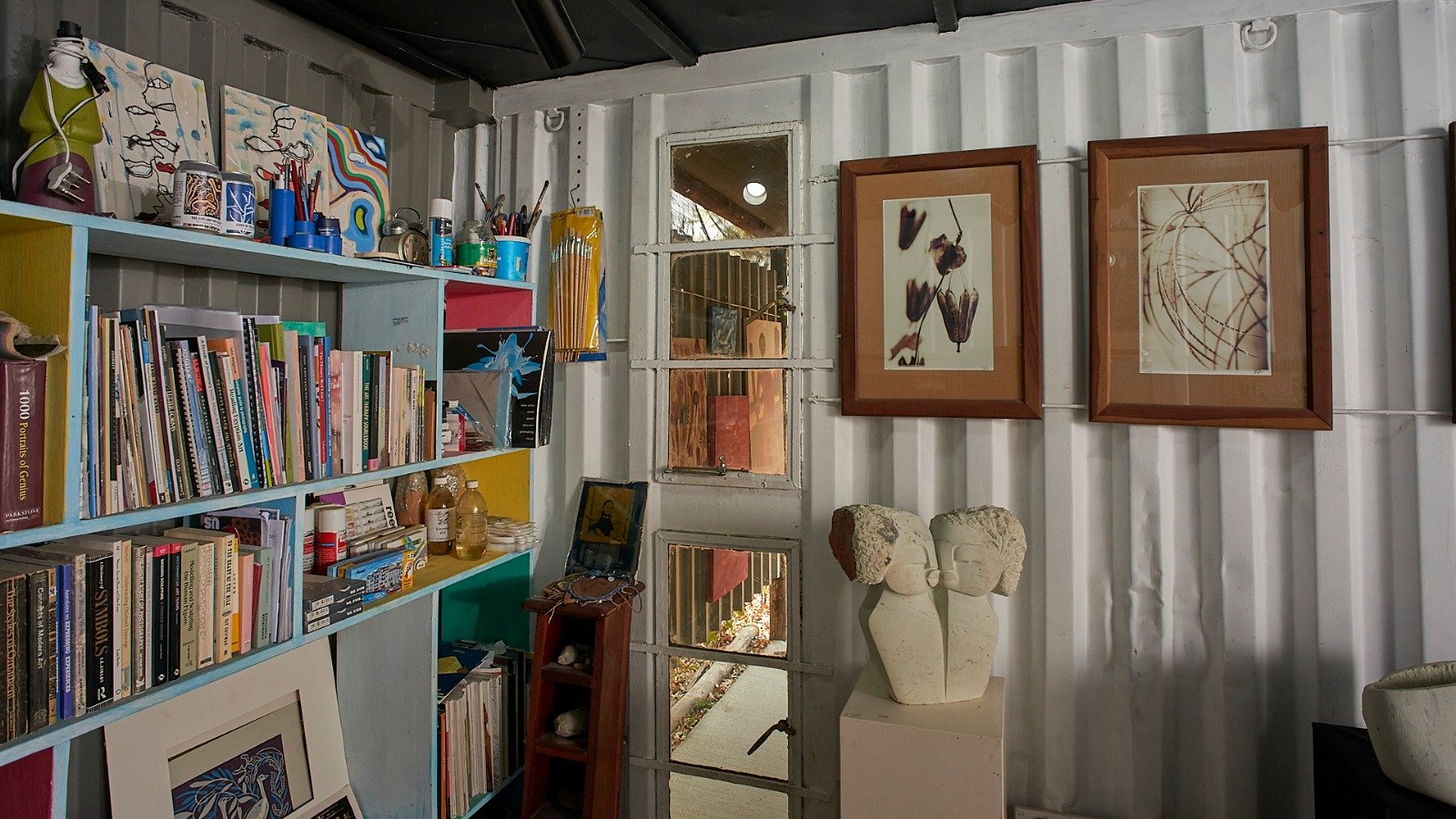 The Space Botswana
The Space Botswana
Exhibiting a body of work by contemporary painter Katlego Twala for RMB Latitudes 2025, Banana Club’s showcase is oriented around themes of the ephemeral and fleeting. An artist-led collective, Banana Club’s visual production and expression prioritises the formation of safe and engaging community dialogue. It might be said that the collective’s presentation of Twala’s work approaches the question of how portraiture, typically conceived as a subjective medium par excellence, exceeds the solipsistic. As opposed to descending into the interior domain of the subject, Banana Club’s showcase of Twala’s portraiture attains towards an exploration of “the fragility of personal history–the way memory distorts, fades, and yet remains deeply present.”
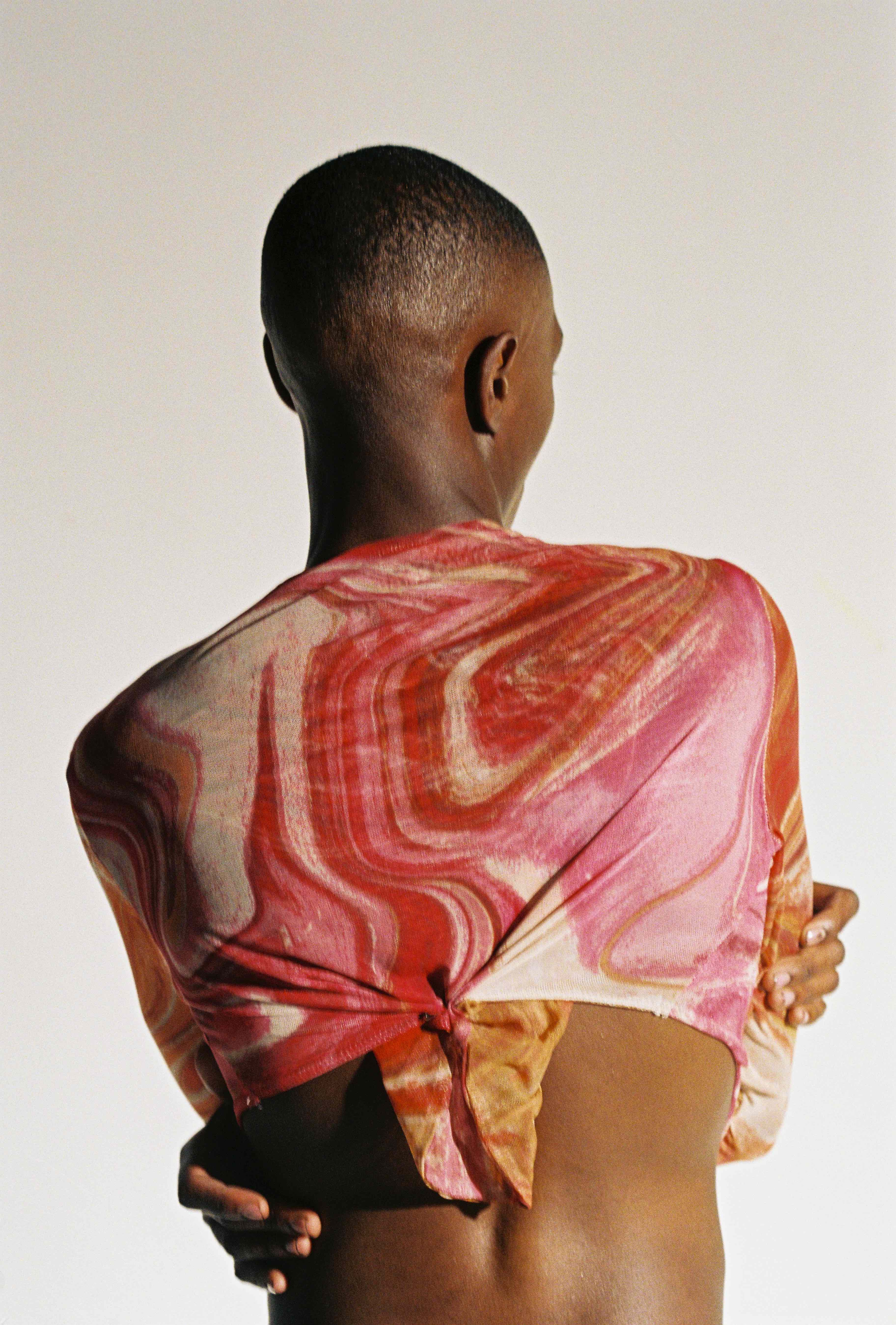
Visule Kabunda, TA PINDA, presented by Banana Club
Taken as a whole, the range of critical, archival and artistic voices emerging out of Botswana’s contemporary art scene share an ethos of premeditated divergence. However, this isn’t a complete rupture conceived along the lines of a direct split with previous modalities. Perhaps the better words are repurposing or reappropriation, not so much finding a voice as it is asserting one. Reflecting on the overall approaches of the exhibitors, Latitudes curator Boitumelo Makousu notes how the intersection of “independent interests and collective narratives not only inspires but also reveals the depth and nuances of Botswana’s arts landscape. The presentations reflect an innovative direction by the artists and curators, fostering [new methodologies that challenge barriers] around art and its historical influences.”
This much is evident: Botswana’s art industry is undergoing a period of metamorphosis, in part reflected by the growing importance of collective-based experimentation and shifting critical and visual dialogue. Historically, the region’s artistic output was typified by a heritage and conservation approach, with a focus on landscape and wildlife elements. Today, despite limited support from commercial institutions, artists, thinkers and cultural archivists are refining their approaches. For Banana Club’s Tanlume Enyatseng, there’s a positive shift “towards more conceptually rigorous explorations of identity, memory, gender, and socio-political histories. Artists are engaging with family histories, oral traditions, and personal archives, using contemporary mediums to recontextualize the past. This aligns with a broader global trend of memory-based practices but remains distinctly rooted in Botswana’s own cultural frameworks.”
RMB Latitudes’ Botswana Focus aims to facilitate and catalyse this critical shift, operating as a platform for the growing interest in contemporary art from the region. This will perhaps assist in increasing visibility and exposure for the visual arts in Botswana, leading to greater development and consolidation of necessary arts infrastructure. Indeed, while there are indications of outward momentum, local support is still integral for ensuring the long term sustainability of the visual arts. By highlighting independent and crucial voices, RMB Latitudes’ Botswana Focus aims to engender the future stability of visual arts in the region and beyond.
Further Reading In Articles
African Artist Directory
















